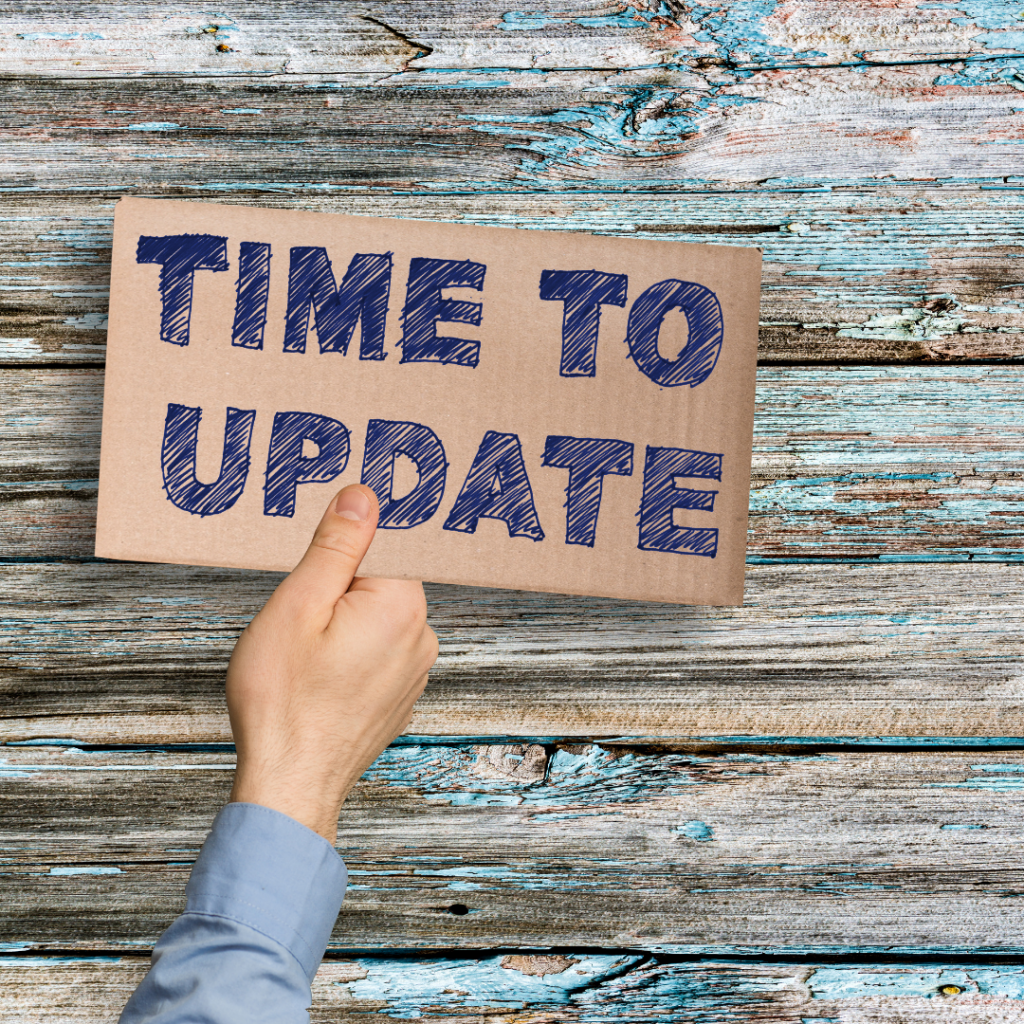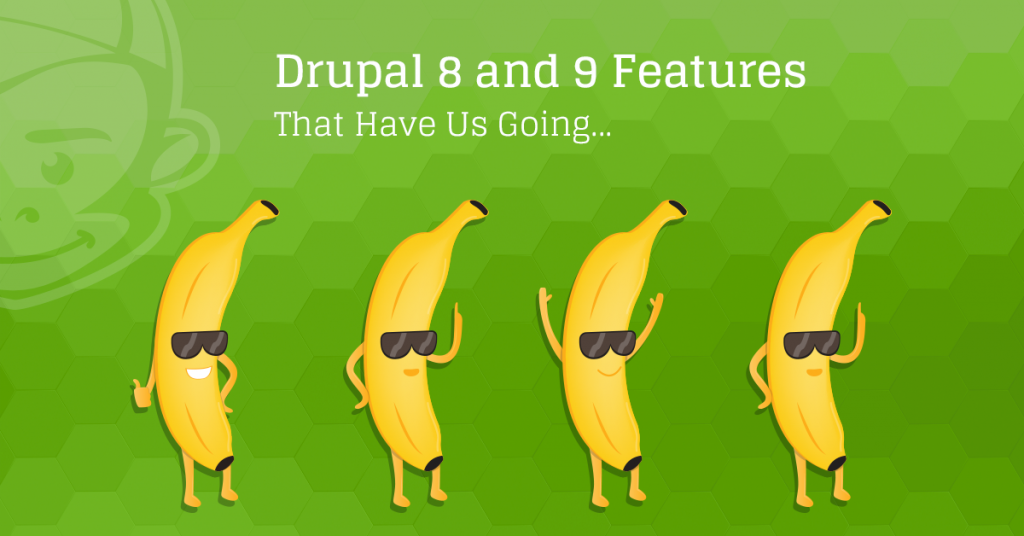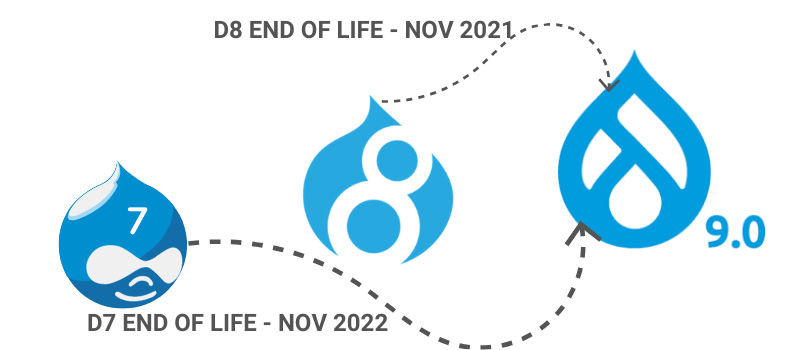End of Life for Drupal 8 – November 2021
In the words of Bruce Buffer: It’s tiiiiiiiiiime!!! Well, almost. But it is beyond time to plan and prepare for the next step in your Drupal website’s technical progression. We’ve gathered the most current and relevant Drupal information for you, as end of life for Drupal 8 is thisclose in our calendars. Our goal is to help you make the best decisions around your website’s security and future success.
What Does End of Life Truly Mean?
It means that the Drupal 7 and 8 platforms will no longer be supported by the Drupal community. This means the Drupal community will no longer provide contributions to those Drupal cores, modules, or security. Don’t worry though, there will be paid programs and organizations that will ensure your site is still manageable and updated as best as it can be, even if you can’t pre-plan or organize a website upgrade before the platform’s end of life!
So the question is – Have you secured a developer partnership that is ready to get your website moved off Drupal 6, 7 or 8 and help you prepare for Drupal 9? We know any move is tiresome, long, and costly; however, it’s time to move upwards with your beloved platform. We hate to say it, but in the tech world, vintage is not trendy!
As Drupal moves forward and technology progresses, we too must embrace change. Why do we have to be progressive in technology? Because technology evolution brings more unique and enhanced features for user experience, administrative experience, flexibility, scalability, performance, stability, and certainly, security. And as technology advances, so does the increased threat of having your site compromised.
On a general note, implementing newer technology with all these improvements and enhancements helps you get to a positive Return On Investment (ROI) faster. Organizations that are consistently growing and upgrading to the latest platforms are more likely to increase their long term revenue, while saving money by reducing costs on administration and repetitive business processes the technology can automate.
Drupal 9, to Date
Drupal 9 was released on June 3, 2020, and the Drupal Association recommended upgrading to D9 within 18 months of the release date in order for your website to stay secure.
What’s the Difference Between Drupal 8 & 9?
The difference between Drupal 8 and Drupal 9 is simple. When Drupal 9 was released, it had all DEPRECATED CODE REMOVED, and had the latest and greatest supported version of the Symfony PHP framework – one of the main reasons D9 was created. Other than that, Drupal 9 code mimics the last minor version of Drupal 8, with all of the same features.
So What is Deprecated Code?
In plain speak, code in Drupal is marked as “deprecated” when it should no longer be used. Typically, code is deprecated because there is a better alternative that should be used instead. It is a natural part of the evolution of software, as technology improves, some features become obsolete.
That being said, deprecated code in Drupal 8 needs to be updated, as it was commonly felt that Drupal 8 had too many ways to generate links (yes, that happens!), so much of that code was removed as part of the clean up for Drupal 9.
However, it should be noted that Drupal 8 modules that do NOT use deprecated code are compatible with Drupal 9!

When Should You Start Updating Your Site?
Now or as soon as possible! Why not benefit from all of the improvements of the latest and greatest Drupal has to offer? Updating your Drupal website will smooth your migration path and your site’s functionality. It is also important to note that deprecated code will continue to work for some period of time, but the longer you wait the higher the chance of important security elements not being supported.
What Other Similarities Do Drupal 8 & 9 Share?
Both platforms are built on the Symfony framework, a PHP framework used to build web applications and websites. While Drupal 8 is dependent on Symfony 3, which also has an end of life in November 2021, Drupal 9 was released with Symfony 4. The new updates to Symfony will bring in more capabilities and ease future updates.
So, what’s the big deal about Drupal 9? Well, to be blunt, nothing. Drupal 9 is Drupal 8 on steroids, and continues to be one of the most robust, flexible and secure platforms ever. It’s the good kind of “nothing”.
What We Love About Drupal 8
With over 200 new and improved features, Drupal 8 was the biggest, baddest update ever in the Drupal community. This version is faster, thanks to PHP7 support, and highly scalable. This was great news for those businesses with complex websites and loads of content. Drupal 8 vastly improved the administrative user experience – creating, updating and moving content has never been easier – which directly benefited your target audience’s user experience.

Every Drupal 8 site brings mobile-first to the forefront, as every base theme is responsively designed. We love it when we don’t have to worry about breakpoints!
Drupal 8 also added new Multilingual features and is available in over 100 languages. It also provides advanced accessibility features that allow your website to be available to all different groups of users.
How to Prepare for the Drupal 9 Migration?
As we mentioned, the smartest way to be prepared for Drupal 9 is to be on an updated Drupal 8 platform. Regardless of what version of Drupal or any other platform you may be on, a full Site and/or Content Audit is highly recommended. The goal of any migration, in addition to upgrading the technology, should be to evolve your site. That includes how to deliver a better user experience (frontend and backend), and how to make it lighter, faster, more stable and secure. This begins with understanding what your site is comprised of, and how well that stuff is functioning.
How else will you know what content types, taxonomies, modules, nodes etc… SHOULD be migrated? In other words, how will you know which data to keep or discard? Do you have broken links? A site audit can save you time and money by not migrating broken links, unnecessary content and so much more.
Back to Drupal: Once you have all your facts, we recommend you schedule a Discovery Phase with your Drupal vendor. Combine what you learn there with the goals of your website. Work with your vendor to put together a realistic budget, timeline, and strategy for upgrading your website. This may sound daunting, but working through a migration plan now will save you a lot of time and money in the long term. With an in-depth, well thought out Discovery, you’ll be confident that you are moving ahead in the best possible way for your website.
Can You Stay on Drupal 7?
Drupal 7 will receive full community support until November 2022, as we stated earlier. This is great news for D7 users, BUT, this is the time to start planning for that eventual upgrade. It’s recommended to keep your D7 site as updated as possible to stay secure, in particular, your site’s PHP version. Running the latest supported PHP version ensures the site is protected against vulnerabilities identified in older versions.
Next Steps for Your Site
There’s a lot to absorb when preparing for an upgrade to your website, but hopefully you’re now armed with the right
info to get you on the right path. It cannot be stressed enough how important proper planning is for a successful website migration. This knowledge should give you the peace of mind you deserve so you can navigate through the next year confidently, and prepare to take the next step for the best web presence possible for your business.
Still looking for more Drupal end of life info? Check out this fireside chat video with one of our Drupal experts on the subject.






